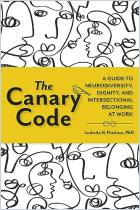Melden Sie sich bei getAbstract an, um die Zusammenfassung zu erhalten.

Melden Sie sich bei getAbstract an, um die Zusammenfassung zu erhalten.
Amanda Kirby and Theo Smith
Neurodiversity at Work
Drive Innovation, Performance and Productivity with a Neurodiverse Workforce
Kogan Page, 2021
Was ist drin?
Build a neurodiverse workforce to benefit your firm’s performance – and society.
Recommendation
Firms that recruit, accommodate and include neurodiverse workers reap the advantages of divergent thinking, often experiencing boosts in creativity and innovation. Here, neurodiversity advocate Theo Smith and entrepreneur Amanda Kirby describe this less understood aspect of diversity, equity and inclusion (DEI), one that affects people who think and work differently from mainstream employees. Individuals with ADHD, autism, dyslexia and other conditions face tremendous barriers to employment and success at work. The authors’ astute recommendations and compassionate understanding will enhance any discussion of workplace DEI.
Summary
About the Authors
Theo Smith is a leading advocate for neurodiversity and vice president of customer acquisition for Zinc Work. Amanda Kirby is the founder and CEO of Do-IT Solutions, specializing in neurodiversity screening tools.





















Comment on this summary